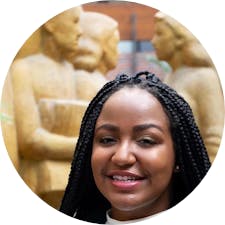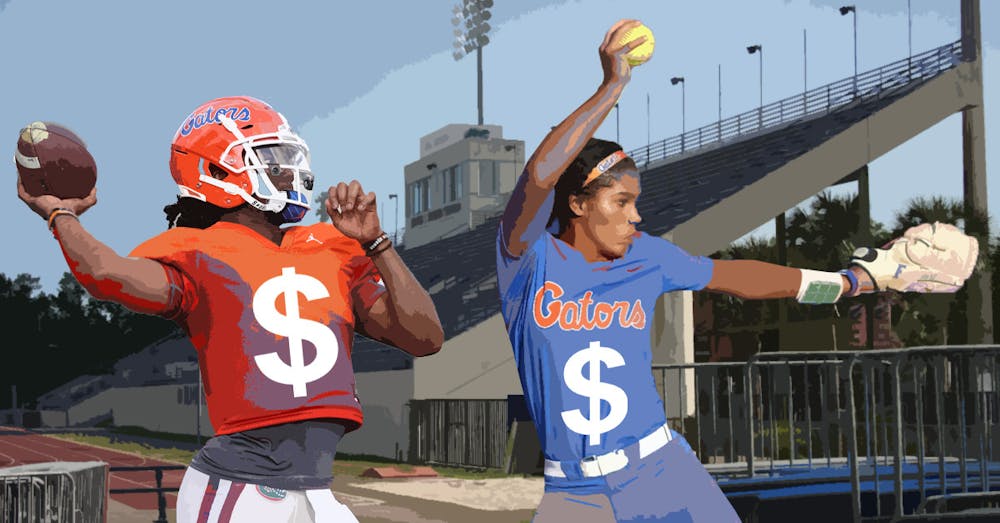Jaimie Hoover heard the same comments every time she changed her hairdo.
Can I touch it? How long did it take? Wow, your hair got shorter!
The former Gators softball outfielder said she faced many microaggressions, or subtle discriminatory comments, during her five years playing for UF. Hair was just one aspect.
“Me and my teammates who were Black often felt like people didn’t understand us,” Hoover said. “Some of the things that were said to us wasn’t appropriate.”
A quarter of UF’s student-athletes are Black. But enrollment statistics show a clear disparity: less than 7% of the total student population is Black. The group is visible in athletics and underrepresented in classrooms.
Black athletes, Hoover said, have become an aspect of entertainment at UF. And the university profits from them — all while offering little support.
Former Gators tight end Clifford Taylor IV agrees. He feels he and other Black student-athletes were lured in by universities.
“More money in their pockets, when they knew back then the NCAA wasn’t allowing us to be paid a dime,” Taylor said.
But recent changes may improve systemic issues in athletics. Taylor believes athletes can empower themselves through the NCAA’s name, image and likeness policy, which allows them to receive endorsements. College athletes were prohibited to profit off of themselves before July 1.
University athletic officials disagree that college sports programs lure in Black student-athletes, however.
Recruiters look for athletes who are coachable and who will mesh with the team regardless of race, said John Herron, the assistant director of player personnel for the Gators football team.
“Why would race come into play?” he said. “I don’t think race plays a part in recruiting. I just think it all depends on the sport.”
Diversity — and a lack thereof — mirrors how sports are spread out, Herron said. Football is dominant down in the South. Basketball is a worldwide sport. Swimming, golf and tennis are typical in the suburbs.
“A lot of sports are not in the inner city,” Herron said. “So, the number of minorities in [those sports] are going to be low.”
As a Black softball player in a majority white sport, Hoover managed the challenges she encountered. Incessant remarks — and even policies — continued to target her hair type.
The team had a rule that stated its athletes couldn’t wear more than two braids, which many of her teammates found unfair.
Hair braiding holds cultural and ancestral significance in the Black community. Braids were used during slavery in lieu of maps and served as storage for food. They remain an important protective style.
Protective styles are notably easier to maintain for Black student-athletes. They aid in keeping hair and sweat out of the way during games.
Hoover and other Black players called a team meeting to explain how the policy could be discriminatory. They used the moment to educate their coach, who hadn’t understood the impact the rule had on some of his players.
“His reasoning was not meant to oppress our hair,” she said. “Thankfully, he saw our concerns and took them to heart.”
Misunderstood by coaches and fellow teammates, Black athletes sought a safe space. A space to gather, talk and vent about problems prominent on predominately white teams.
The Black Student-Athlete Council served as that space. A University Athletic Association student development coordinator established the council in 2020 for Gators athletes across the 21 sports at UF.
Hoover and other athletes discussed racial issues and used the group to educate teammates about their microaggressions.
However, the council isn’t enough, she said, and UF needs to accommodate moving forward. Black student-athletes aren’t just used for profit, but to promote diversity — even if the diversity isn’t actually there.
“UF should have more Black groups and communities for these Black students to have an outlet,” she said. “There needs to be diversity, especially in the staff and teachers.”
Taylor agrees UF should swap words with actions to show solidarity with its Black students. The university’s previous statements, notably after the Black Lives Matter protests last summer, were nothing more than performative activism, he said.
“With everything that transpired last year, you’d think there’d be some changes, but honestly, I haven’t seen any,” he said. “Instead of sending out messages, administration could maybe show up to some of the events held by minority groups, educate themselves on our different cultures and definitely expand the minority student population.”
The council was too small a solution for an extensive problem. So Taylor yearns to see a change, to see more opportunities for people who were raised like him, who look like him, who are passionate about being Black student-athletes.
Contact Karina Wilson at kwilson@alligator.org and follow her on Twitter @kk_rinaa

Karina Wilson is a second-year student at the University of Florida within the College of Journalism and Communications with a specialization in sports and media. She aims to produce engaging, accurate and current content for all types of sports fans. Currently, Karina is The Alligator's lacrosse beat writer.






